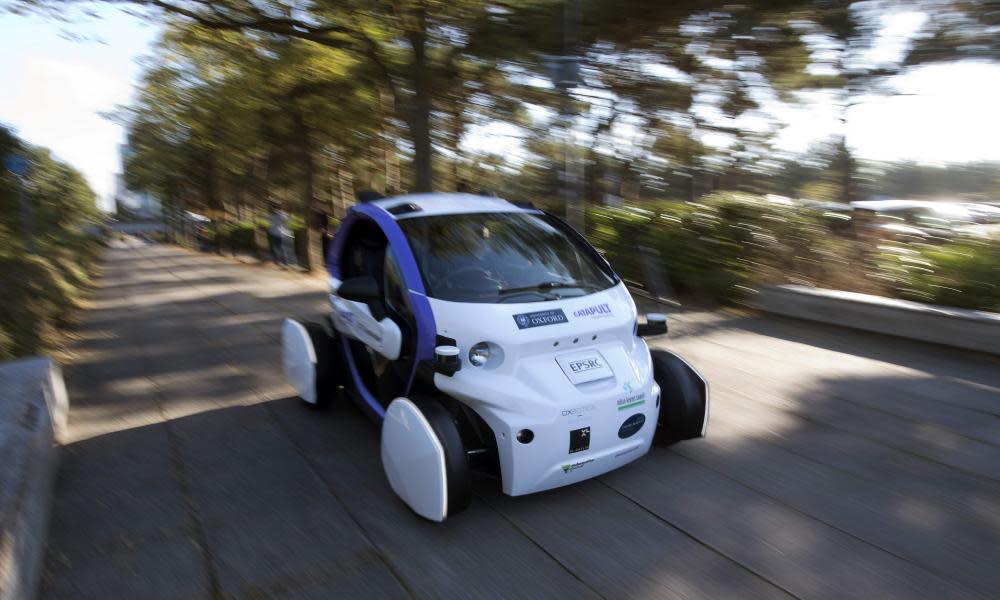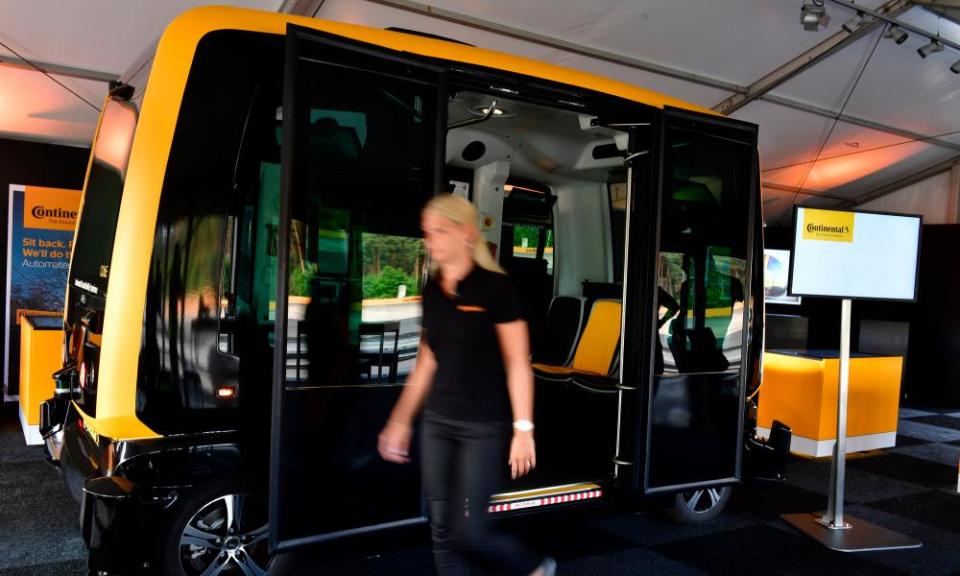Trains, planes and automobiles: the transport systems embracing smart tech

The transport industry is going through a revolution. You can now buy your train tickets through apps and pay with Apple Pay. In cities, you can tap your contactless bank card to pay for public transport, and of course Uber has reinvented the taxi sector. It’s already difficult to remember what journeys were like in the age of the paper ticket.
Done well, digitising transport services can create a better customer experience, and improve the efficiency, and ultimately the profitability and sustainability, of our transport system. But which sectors are ahead of the curve?
“Every part of transport is embracing something under the digital umbrella, but they are all embracing different parts of it,” says Grant Klein, transport partner at PwC.
“There is a glut of technologies which we think will have an impact on how transport services are provided in the coming decades, as well as on how new transport infrastructure is created and maintained.”
These include digital sensors, wearable smart devices and appliances, virtual reality, augmented reality, Blockchain (the database technology made famous by Bitcoin), 3-D printing, and drones, robotics and artificial intelligence.
These technologies are already beginning to make a difference. Drones are being used to check the condition of infrastructure like roads and railways so maintenance crews can be better utilised. Virtual reality is helping railway staff to learn how to work on new rolling stock. In the motor industry, robotics and ‘virtual prototyping’ are already being used, while in the aerospace industry, manufacturers are using the ‘internet of things’, as well as using the cloud instead of their own web servers.
And as people get more comfortable with digital technology in their everyday lives, customer expectation is changing too. There is a growing demand for transport as a service. Klein says: “imagine you have a single account that enables you to use the train, the bus, a cycle hire scheme or a rental car. That’s the concept behind so-called mobility as a service – or Maas. Real examples of this are already happening in cities like Hannover.”

Driverless cars
The big innovation on the horizon for road transportation is driverless cars. In car manufacturing, we will see a new generation of “smart” motoring technology, says Kate Rock, a spokeswoman for Goodyear Tyres, who have just launched the Eagle 360 Urban, an artificial intelligence tyre.
“We believe strongly in the idea that shared mobility will soon become the norm and that car ownership will become less common,” Rock says. “There will be a tipping point where autonomous technology will reach the stage where we use on-demand services for everyday travel. As a result, our cities will ultimately begin to change, as they are no longer designed for cars and there is less need for practical road elements like car parks and traffic lights.”
Collaboration across industry sectors will be key to making digital technology a reality, she says. “Our smart tyres need to work in harmony with other features such as navigation systems and safety tools that prevent collisions – this will be the same with electric and flying cars.”
“There’s a political will for us to work together as an industry"
Kevin Ives, digital transformation director of Arriva
This may sound like science fiction, but Rock says they could soon become a reality. “There’s a good chance this technology will be with us in the next ten years, but it won’t be a case of one company taking a lead. We’re seeing a revolution in the way that we drive, and motoring manufacturers, tech developers and city planners will need to work together to make it happen.”
Klein agrees, but while the technology is almost there, not everything is worked out. “One area that needs work is in how these vehicles will be made available to customers,’ he says. “There’s a lot we can learn from how the mobile phone market evolved, with multiple packages on offer to suit customer needs.”
“There is clearly work to be done to get to the point where our access to driverless cars is as second nature as our use of smartphones.”
Smarter trains
The rail industry is further behind on digitisation, however Kevin Ives, digital transformation director of Arriva, says the Rail Delivery Group has helped get national schemes like passenger WiFi off the ground.
“When there are national schemes like smart ticketing, we’re much better than we used to be at mobilising ourselves as an industry,” he says. “There’s a political will for us to work together as an industry.”
One area the rail industry is making progress on is in fitting sensors, so data can be gathered and analysed to reveal patterns and behaviour. Safety and security is also a priority. Drivers now carry tablets, rather than large manuals of procedures that can’t easily be updated.
Aviation ahead of the curve
Aviation is ahead of the curve, but there are challenges, says Mary McMillan, vice president at Inmarsat, a satellite network delivering high speed broadband to planes, improving safety and efficiency.
“One of the issues in the industry is we’re flying airplanes which are anywhere between two days and thirty years old. Technology on board can be very dated, so we have to ensure that we can integrate both newer and older planes. It’s a massive issue and we have to do it safely.”
While technology remains at the forefront, policy needs to keep safety as a central priority, says Juliet Jain, senior research fellow at the Centre for Transport and Society. “The government is promoting the idea of high quality 5G network coverage along all transport corridors, which will significantly enhance the capabilities of automated systems,” she says. “However, connecting to the internet while driving could have unintended consequences for road safety.”
Following the recent IT collapse at British Airways due to human error, there are concerns being raised about reliance on the internet. In addition, recent attacks on businesses and the NHS have highlighted the issue of cyber-attacks on transport systems.
Klein recently led a PwC masterclass that addressed the issue: “ Any transport system needs to be able to deal with threats, and these clearly change as we employ new technology and rely on digital innovation.”
“But even in a digital world, threats remain either accidental, such as user or system errors, or malicious, where there is deliberate tampering or unauthorised access to systems.”
Sign up for your free Guardian Public Leaders newsletter with comment and sector views sent direct to you every Thursday. Follow us: @Guardianpublic

 Yahoo News
Yahoo News 
